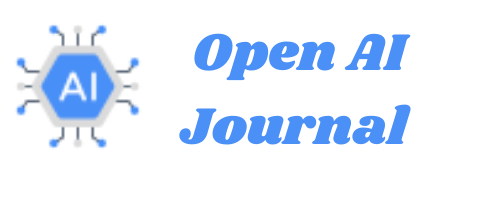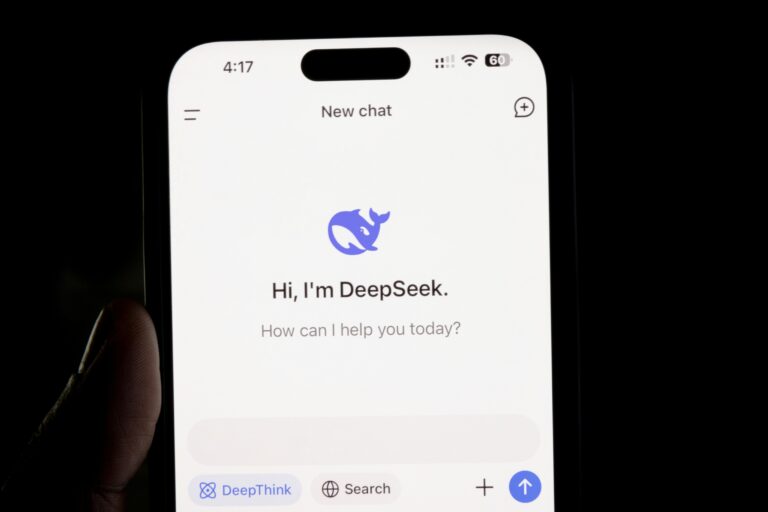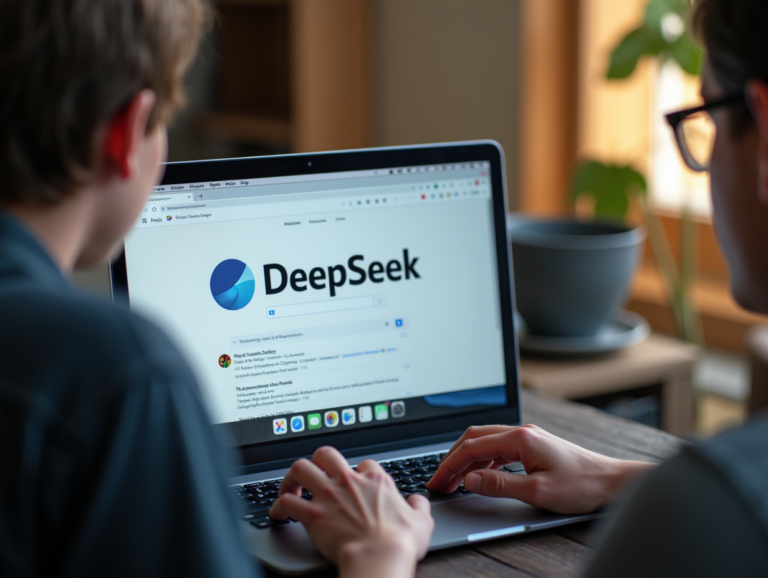The Shocking Truth About Student Cheating Using AI

Table of Contents
Introduction: The Growing Crisis of Cheating in Colleges
In today’s digital world, it feels like there’s a new tool or shortcut available every time you turn around. For college students, these tools can be life-saving, offering ways to tackle tough assignments, study more efficiently, or even just get through a hectic semester. However, these advancements in technology also bring with them a growing problem—cheating.
The rise of artificial intelligence (AI) tools, particularly ones like ChatGPT, Google’s Gemini, Anthropic’s Claude, DeepSeek and Microsoft’s Copilot… has raised the stakes in a very real way. Students who might have once relied on traditional methods of cheating now have an entire digital army at their disposal. In fact, AI cheating among college students is no longer a fringe phenomenon—it’s become a significant issue that universities are struggling to contain.
You might be thinking, “Student Cheating Using AI has always been around. Why should this be a big deal?” Well, the stakes are higher than ever. These AI tools don’t just help students with small assignments—they’re helping them skip out on critical learning and undermining the academic integrity that colleges are supposed to uphold. As we dive into this issue, we’ll unpack exactly why AI cheating among college students is a growing crisis and explore the long-term consequences of this digital age dilemma.
1. The Impact of AI on Academic Integrity
It’s hard to talk about Student Cheating Using AI without addressing the huge role generative AI tools like ChatGPT play in today’s educational landscape. When these AI tools emerged, they promised to revolutionize the way we learn, but instead, they’ve opened a Pandora’s box of academic dishonesty.
How AI is Enabling Cheating
The simplicity with which students can access AI tools like ChatGPT, Google’s Gemini, Anthropic’s Claude, DeepSeek and Microsoft’s Copilot… has made cheating more efficient than ever before. Think about it: students can use AI to write essays, generate ideas for assignments, or even complete problem sets. In mere minutes, what would have taken hours of effort can now be completed in seconds, often with little to no human input. All a student needs is a prompt, and the AI does the heavy lifting. It’s like having a tutor that doesn’t ask questions, doesn’t require payment, and doesn’t even need credit for the work it’s done.
Real-life examples of AI-assisted cheating are becoming more common as students embrace these technologies. At universities like Columbia, students have been caught submitting papers generated entirely by AI tools. It’s not a matter of whether this is happening—it’s about how widespread and normalized it’s become. Even if a student’s professor attempts to spot-check for cheating, these AI-generated papers are often sophisticated enough to bypass basic plagiarism detection software like Turnitin. While Turnitin and other software have advanced their AI detection tools, they still lag behind in identifying content generated by advanced systems like GPT-4.
2. How Student Cheating Using AI

Cheating in college isn’t a new problem. Students have always found ways to cut corners—whether it was using cheat sheets, sharing answers, or copying from classmates. But AI cheating among college students has brought cheating into a new, more insidious realm. These digital tools have made the process far easier, faster, and harder to detect. And unfortunately, students have caught on.
Common Methods of AI-Based Cheating
One of the primary methods college students are using to cheat today is the submission of AI-generated essays. This is especially common in courses that require writing-heavy assignments. For example, a student might simply type a topic into ChatGPT or ( Google’s Gemini, Anthropic’s Claude, DeepSeek and Microsoft’s Copilot… ), and in a matter of seconds, they have a fully fleshed-out essay that is coherent and often hard to distinguish from human-written work. This is so prevalent that some professors have started redesigning assignments in an attempt to make AI-generated work less viable, but even that is a battle that’s hard to win.
Beyond essays, AI is also being used for homework assignments and even exams. Take math problems, for example: AI-powered tools like Wolfram Alpha can solve complicated equations in seconds. If you’re not careful, students could bypass studying and use these AI tools for all of their homework.
The rise of AI-assisted research is another troubling trend. In some cases, students use tools like ChatGPT, Google’s Gemini, Anthropic’s Claude, DeepSeek and Microsoft’s Copilot… not only to generate written work but also to find research articles, summaries, or solutions that might otherwise require hours of library research.
3. Why Cheating Has Become So Prevalent
If we take a step back and think about why Student Cheating Using AI is becoming such a widespread issue, the answer often comes down to the pressure students face. The stakes are high: grade-point averages (GPAs) can determine future career opportunities, and the competitive nature of college admissions means that students can feel that every assignment is a reflection of their potential.
Academic Pressure
The pressure to succeed in college is immense, and for many students, cheating feels like the only viable option. It’s no secret that students often juggle multiple responsibilities—work, internships, extracurriculars, and their social lives—on top of their academic workload. When assignments pile up, and deadlines loom, AI offers a quick and seemingly risk-free solution. Why spend hours on a research paper when you can have it done in minutes?
According to a survey by The Journal of College and University Student Housing, over 40% of students admitted to cheating in some form during their academic careers. This statistic reveals the deepening concern within higher education institutions about the normalization of cheating.
The Lack of Consequences
One significant issue is that many universities are not adequately punishing students for cheating. Even when students are caught, the consequences are often mild, with some students only facing a slap on the wrist or being placed on probation. For many, these minimal consequences reinforce the idea that cheating is a low-risk endeavor.
4. The Consequences of College Cheating: What’s at Stake?

While cheating may seem like a way for students to save time and stress, the long-term consequences can be severe—not only for the students involved but also for the integrity of the entire academic system.
Impact on Learning
Cheating undermines actual learning. Students who cheat are not developing the skills they’ll need in the workforce, which can have a significant impact on their professional lives. For instance, those who use AI to write their essays are bypassing critical thinking and writing skills that they would otherwise need to hone. AI tools may give them an essay, but they won’t teach them how to write effectively, solve complex problems, or think creatively.
The Erosion of Academic Integrity
Over time, the normalization of AI cheating in college undermines the academic integrity that colleges are built on. If students know they can get away with cheating, they may become desensitized to the value of honest work. This shift in perspective has wider-reaching effects on campus culture and the future of education itself. Ultimately, degrees become worth less when students no longer have to demonstrate their capabilities or knowledge.
5. The Role of Educational Institutions in Combating Cheating
So, what’s being done to prevent AI cheating among college students? Unfortunately, many educational institutions are struggling to keep up with the rapid advancements in technology. AI detection tools are still in their infancy, and many of them are not yet able to differentiate effectively between human-written and AI-generated content.
How Colleges Are Responding
Some universities have begun integrating AI detection systems to identify plagiarism, but even these tools aren’t foolproof. Some professors have implemented more personalized assessments, such as oral exams, project-based learning, or in-class writing assignments to make it harder for students to cheat. However, these methods are not without their own challenges.
Additionally, schools like MIT and Stanford are experimenting with ethics courses and academic integrity seminars to help students understand the consequences of their actions. But are these efforts enough? It’s clear that universities will need to rethink how they assess students, as traditional exams and assignments are increasingly vulnerable to AI manipulation.
6. The Debate: Should AI Be Banned in Education?
With AI tools playing such a prominent role in AI cheating among college students, the debate over whether AI should be allowed in educational settings has never been more relevant.
Arguments for Banning AI in Academic Settings
On one side, some argue that AI should be banned from educational settings entirely. They believe that AI makes it too easy for students to cheat and that its presence in the classroom diminishes the value of education. The ability to generate text or solve problems without truly understanding the material poses a real threat to the educational system’s credibility.
Arguments for Embracing AI
On the other side, there’s a growing movement to embrace AI as a tool for learning, arguing that we should be teaching students how to use these tools responsibly rather than banning them outright. Teaching students how to work with AI could prepare them for the workforce, where these technologies are likely to be a part of everyday life.
The reality is probably somewhere in between. AI can be a valuable learning tool, but its misuse by students who aren’t held accountable undermines its potential benefits.
Conclusion: What Can Be Done to Stop the Cheating Epidemic?
The rise of AI cheating in college presents a complex and growing challenge. As technology continues to evolve, students will undoubtedly find new ways to use it to their advantage. However, this also offers a unique opportunity for universities to rethink their approach to education. They must balance the benefits of AI with the need to maintain academic integrity. Whether through better detection systems, redesigning assignments, or teaching students the value of honesty, the time for change is now.
The truth behind how college students are cheating their way through college isn’t just about the tools they’re using—it’s about a shift in academic culture that needs to be addressed. By making academic integrity a priority and rethinking how we assess students, we can stop the crisis in its tracks. The future of education depends on it.
Frequently Asked Questions
❓What percentage of students use AI to cheat?
Honestly, the numbers are pretty alarming. According to a 2023 survey by Intelligent.com, over 30% of college students admitted to using ChatGPT or similar AI tools to complete assignments or exams. And among those, nearly 50% used it without modifying the content—meaning they submitted the AI’s work directly.
From my own experience , I’ve seen people use it for everything from writing full essays to generating code or even crafting discussion posts. The pressure to perform—and the accessibility of AI—makes it an easy shortcut.
But here’s the thing: using AI that way isn’t just risky—it’s shortchanging your own education.
❓How has AI affected students?
AI has been a game-changer in both good and bad ways. On one hand, tools like ChatGPT (or similar AI tools ) can genuinely help students understand complex material, brainstorm ideas, and learn faster. It’s like having a tutor available 24/7.
But on the flip side? AI has made it ridiculously easy to bypass the learning process. Many students now rely on AI to do the thinking for them—writing essays, solving math problems, answering quiz questions. Over time, this creates a serious gap in their understanding and hurts their academic development.
It’s kind of like going to the gym and asking a robot to lift weights for you—you might look like you’ve done the work, but you haven’t actually grown
❓Is using AI contract cheating?
Yes, in many academic institutions, it absolutely is. Contract cheating is when a student gets someone—or something—to do their work for them and then submits it as their own. So if you’re using AI to generate full essays, solve test questions, or write research papers without contributing your own thoughts or edits, you’re walking into contract cheating territory.
Most colleges define cheating broadly. It’s not just copying from another student—it’s any form of unauthorized assistance, and AI falls under that now.
So just because it’s a bot doesn’t mean you’re in the clear.
❓How has technology increased cheating?
Technology has made cheating easier, faster, and harder to detect. Back in the day, cheating meant writing notes on your hand or sneaking a peek at someone else’s test. Now? You can get a full 2,000-word essay written by AI in under 10 seconds.
Tools like ChatGPT, Course Hero, and Chegg have created a whole underground academic shortcut economy. And since much of college work is now online or remote, monitoring has become harder for professors.
What’s even trickier is that AI-generated content isn’t “copied” from anywhere, so it often slips past plagiarism detectors, unless professors are using AI-detection tools.
❓How do I stop students cheating with AI?
It’s a growing challenge, but here are some effective strategies:
- Change the type of assignments – Make them more personalized and less Googleable. Ask students to reflect on their own experiences or apply course concepts to current events.
- Use oral exams or live discussions – It’s much harder to fake understanding when students have to explain concepts in real time.
- Adopt AI-detection tools – Software like Turnitin, GPTZero, and Originality.AI are starting to help flag AI-written content.
- Educate about ethical AI use – Don’t just ban it. Teach students when and how it’s okay to use AI—like for brainstorming or research, but not for completing assessments.
In my own teaching experience, when I started asking students to explain how they arrived at their answers, AI misuse dropped significantly.
❓What is the problem with students using AI?
Here’s the heart of it: when students use AI to cheat, they’re not learning.
Yes, AI can help you get through a tough assignment. But if you use it to replace your thinking, you’re skipping the mental reps needed to actually understand the subject. This leads to long-term issues—students graduate without the skills they need in the real world.
Also, there’s a trust issue. AI cheating damages the student-professor relationship and undermines the credibility of the academic system.
The problem isn’t the tool—it’s the intent.
❓Can teachers see if you use AI?
Increasingly, yes. While not foolproof, many educators are getting better at spotting AI usage. Here’s how:
- Writing style shifts: AI writes differently than most students—clean, sometimes too formal, or overly generic.
- Detection tools: Tools like GPTZero, Turnitin’s AI detector, and Copyleaks can flag likely AI-generated content.
- Viva checks: Some professors now do short oral follow-ups to verify that the student actually understands what they submitted.
I’ve seen cases where students turned in flawless essays—only to fail the follow-up Q&A because they didn’t actually write them. That’s a huge red flag.
❓How to avoid AI detection in essays?
First of all—if you’re using AI to cheat, don’t. But if you’re using AI responsibly—to generate ideas or structure your thoughts—here’s how to stay transparent:
- Edit heavily: Never submit AI content without rewriting it in your own voice.
- Cite AI: Some schools now allow AI tools to be cited, like any other research aid.
- Mix sources: Blend AI-generated input with your own research, reflections, and analysis.
- Use AI only for support: Let it help you brainstorm, not produce the final product.
Remember, AI detection tools are improving fast. So it’s better to treat AI like a tool to assist your thinking, not a crutch to carry you.






